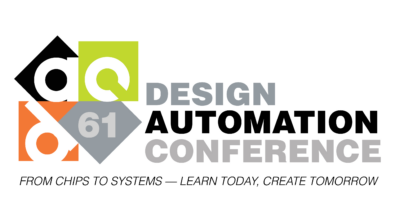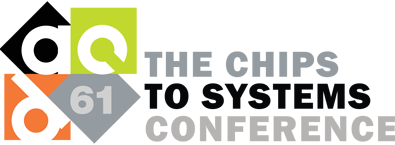DAC Panel: Bridging Pre-Silicon Verification and Post-Silicon Validation
I’d like to encourage you to attend the technical panel titled Bridging Pre-Silicon Verification and Post-Silicon Validation at this year’s DAC. The panel will be held on Tuesday, June 15, 2010 between 2:00 PM—4:00 PM.
|
Chair: |
Alan Hu – Univ. of British Columbia, Vancouver, BC, Canada |
|
Organizers: |
Rajesh Galivanche – Intel Corp., Santa Clara, CA |
|
|
Amir Nahir – IBM Corp., Haifa, Israel |
|
|
Avi Ziv – IBM Corp., Haifa, Israel |
|
|
|
|
Speakers: |
Miron Abramovici – Tiger’s Lair, Inc., Vienna, VA |
|
|
Sean Baartmans – Intel Corp., Hillsboro, OR |
|
|
Valeria Bertacco – Univ. of Michigan, Ann Arbor, MI |
|
|
Albert Camilleri – Qualcomm, Inc., San Diego, CA |
|
|
Harry Foster – Mentor Graphics Corp., Plano, TX |
|
|
Shakti Kapoor – IBM Corp., Austin, TX |
Why do I think this is an important topic? At 65nm, we witnessed the post-silicon validation effort often consuming more than 50% of an SoC’s overall design effort, as measured in cost, and the problem grows as the industry continues to move to even smaller geometries. Unlike pre-silicon verification, which has historically (and conveniently) partitioned the verification effort into separate concerns (such as, electrical, functional, performance, and software), identifying failures in post-silicon requires skills spanning multiple validation disciplines. Furthermore, the process of post-silicon validation is hindered by both poor observability and poor controllability. To address today’s escalating validation effort requires establishing a stronger link between the pre-silicon verification and post-silicon validation processes. Certainly assertions are one technique that can bridge pre- and post-silicon by providing improved observability on critical functionality. However, the improvements obtained by silicon assertions are only as effective as the quality of their pre-silicon form. Realistically, only a small set of critical assertions could be shared between the pre- and post-silicon processes. What is needed is a means to instrument into the silicon observability in a reconfigurable fashion, thus allowing the post-silicon validation engineer to shift focus on specific areas of concern. Concerning test generation, pre-silicon test provides insufficient coverage to stress the post-silicon design. Hence, what is needed is a means to capture post-silicon test associated with a failure in an abstract form that can be demonstrated on a pre-silicon model. Finally, concerning triage and error isolation, both the pre-silicon verification and post-silicon validation processes could benefit from automatic techniques that identify a set of candidate causes behind the detected failure.
For more information about the upcoming panel, visit: http://www2.dac.com/panels.aspx?event=30&topic=11



